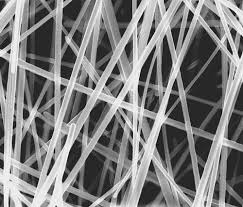Connection and electronegativity of ballistics in nano wire particles based on nano- micro-electronics PHD (educational-research doctorate)
Researcher and author PhD student: Afshin Rashid
Note: Nano-wires are just like ordinary electrical wires, except that they are very small. Like ordinary wires, nanowires can be made from a variety of conductive and semiconductor materials such as copper, silver, gold, iron, silicon, zinc oxide and germanium. Nanofibers can also be made of carbon nanotubes.
Nano wires are less than 100 nanometers in diameter and can be as small as 3 nanometers. Nanocytes are typically more than 1,000 times larger than their diameter. This huge difference in the length-to-diameter ratio of nanowires is often referred to as 1D. This leads to the unique properties that are not found in bulk materials, the minute size of nanofibers means that quantum mechanical effects are of great importance. "Quantum wires" use quantum mechanics to produce wires with a wide range of unique electrical properties. These features include a quantum tunnel that allows wires made of carbon nanotubes to conduct very high levels of electrons that pass through the wire in a ballistic manner.
In the immersion method, nanowires have enough time to transfer nanoparticles from the particles to the cavities ; The step of forming uniform nanoparticles is done slowly and finally uniform nanowires are formed. Structural study with FESEM in the method of immersion of single-stranded nano-wires in all porosity and in a large area in nanoparticle particles has been formed. The simple answer to this question is less than 100 nanometers per particle. But like a scale of 1 - 100 nanometers, it determines the size of a nanoparticle. In order to prevent the contact of cluster particles from atoms, it may be removed below 1 nm, but the electron motion in nanoparticles has particles <1 nm. Because the particles are three-dimensional.
Conclusion:
Nano wires are just like ordinary electrical wires, except that they are very small. Like ordinary wires, nanowires can be made of a variety of conductive and semiconductor materials such as copper, silver, gold, iron, silicon, zinc oxide and germanium. Nanofibers can also be made of carbon nanotubes.
Author: PhD Student ( Afshin Rashid)
PhD student in Nano-Microelectronics at Islamic Azad University, Science and Research Branch, Tehran




